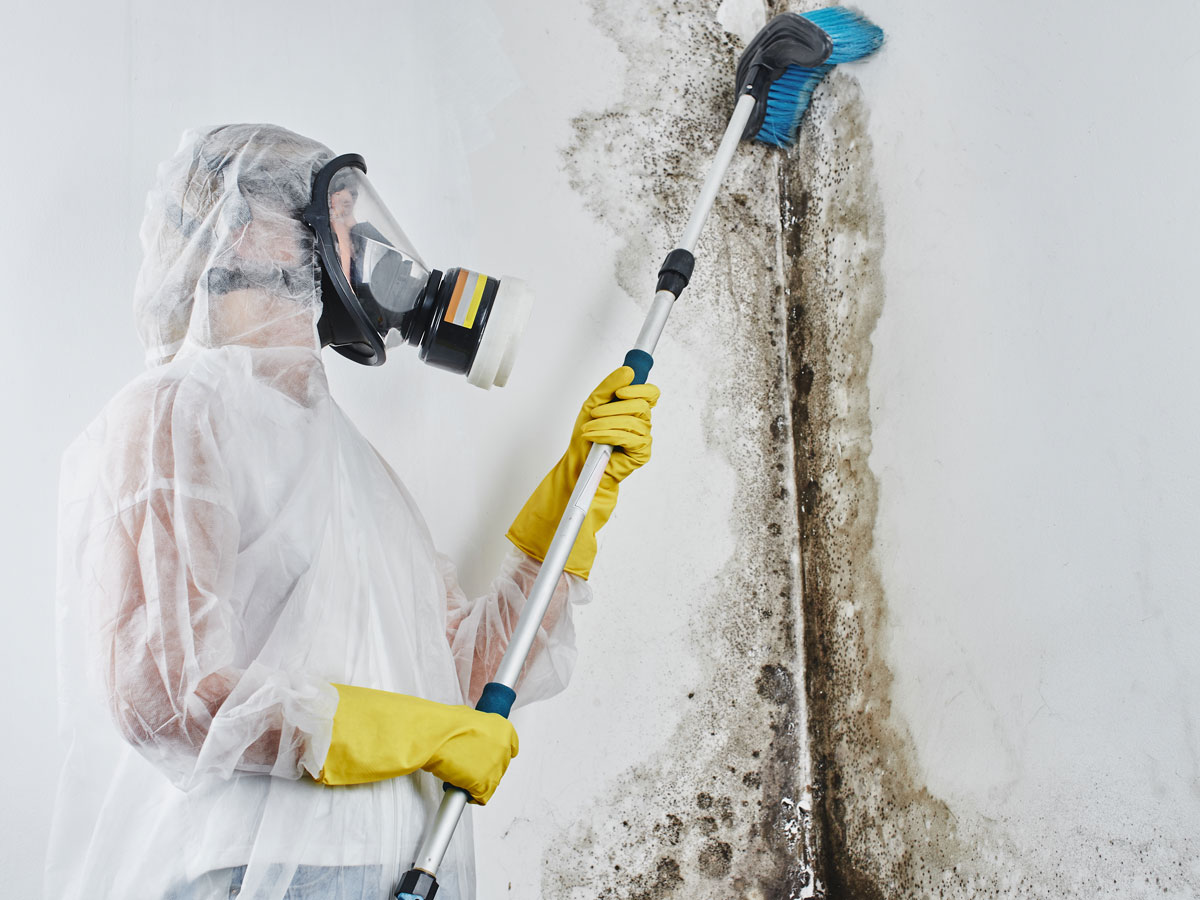UNDERSTANDING THE MOLD MITIGATION AND RESTORATION PROCESS

When moisture causes water damage in dark areas of your home, it creates the perfect environment for mold growth. If your home has water damage, and there are signs of mold growth, you should schedule mold mitigation services from a mold restoration company as soon as possible.
A restoration contractor follows a step-by-step process of mold mitigation and restoration. We are trained and certified to perform specific tasks to extract the excess water from the home, dry it, remove damaged building materials and belongings, and then treat the mold growth so that the restoration process can begin.
Mold Mitigation
Mold mitigation is the first step in the process. We develop a plan and then update it if we discover additional growth during the mold mitigation process.
- Identify excess moisture – Mold can grow in any location where excess moisture exists. It usually starts behind walls or in places where it is damp and dark. We perform a visual inspection to identify excessive moisture conditions. Special tools can identify moisture in hidden locations.
- Assessment of the contamination – We develop a written plan with photographs, possibly video, and information on what the mold mitigation process will include and when it will begin.
- Mold mitigation and cleanup – The process of mold mitigation continues with water extraction and drying. Vacuums extract the water, and we place fans and dehumidifiers to dry the affected area after they are isolated and exposed.
- The damaged building materials and unsalvageable belongings are removed from the property.
- The contractor treats the mold and mildew with an inhibitor solution that kills it at the roots and prevents new growth.
Once the mold restoration technician determines that we resolved the issue, we perform mold testing as a final step before the restoration process can begin.
Mold Restoration
Once the health condition of the environment is determined as safe, restoring the building materials can begin. Every situation is different, so the restoration process will vary depending on what was damaged and where.
For instance, you may have experienced flash flooding because of the weather. If so, the baseboards and lower drywall may need to be removed and replaced. On the other hand, storm damage may only affect the attic area and ceilings of your house.
